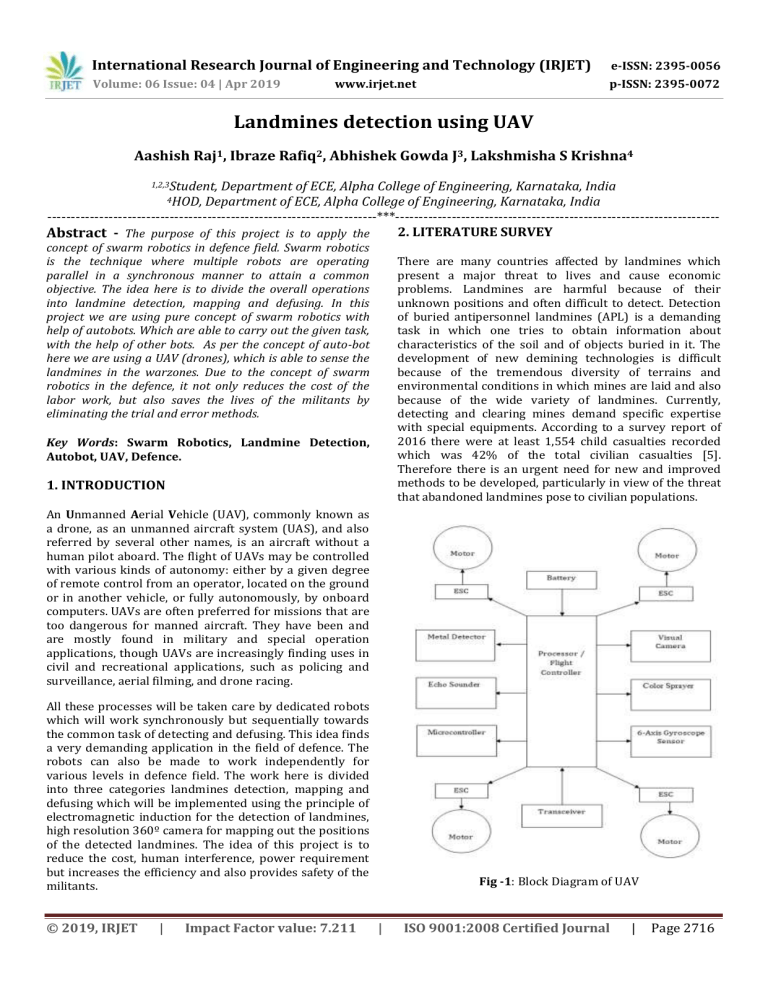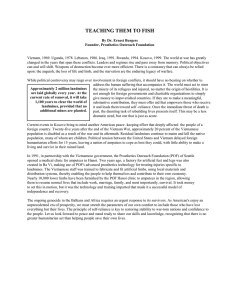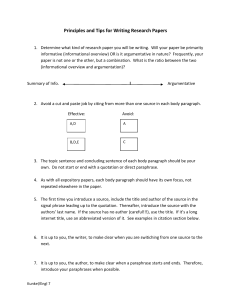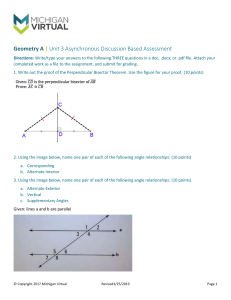IRJET- Landmines Detection using UAV

International Research Journal of Engineering and Technology (IRJET)
e-ISSN: 2395-0056
Volume: 06 Issue: 04 | Apr 2019 www.irjet.net p-ISSN: 2395-0072
Landmines detection using UAV
Aashish Raj
1
, Ibraze Rafiq
2
, Abhishek Gowda J
3
, Lakshmisha S Krishna
4
1,2,3
Student, Department of ECE, Alpha College of Engineering, Karnataka, India
4
HOD, Department of ECE, Alpha College of Engineering, Karnataka, India
----------------------------------------------------------------------***---------------------------------------------------------------------
Abstract -
The purpose of this project is to apply the concept of swarm robotics in defence field. Swarm robotics is the technique where multiple robots are operating parallel in a synchronous manner to attain a common objective. The idea here is to divide the overall operations into landmine detection, mapping and defusing. In this project we are using pure concept of swarm robotics with help of autobots. Which are able to carry out the given task, with the help of other bots. As per the concept of auto-bot here we are using a UAV (drones), which is able to sense the landmines in the warzones. Due to the concept of swarm robotics in the defence, it not only reduces the cost of the labor work, but also saves the lives of the militants by eliminating the trial and error methods.
Key Words : Swarm Robotics, Landmine Detection,
Autobot, UAV, Defence.
1. INTRODUCTION
An U nmanned A erial V ehicle (UAV), commonly known as a drone, as an unmanned aircraft system (UAS), and also referred by several other names, is an aircraft without a human pilot aboard. The flight of UAVs may be controlled with various kinds of autonomy: either by a given degree of remote control from an operator, located on the ground or in another vehicle, or fully autonomously, by onboard computers. UAVs are often preferred for missions that are too dangerous for manned aircraft. They have been and are mostly found in military and special operation applications, though UAVs are increasingly finding uses in civil and recreational applications, such as policing and surveillance, aerial filming, and drone racing.
2. LITERATURE SURVEY
There are many countries affected by landmines which present a major threat to lives and cause economic problems. Landmines are harmful because of their unknown positions and often difficult to detect. Detection of buried antipersonnel landmines (APL) is a demanding task in which one tries to obtain information about characteristics of the soil and of objects buried in it. The development of new demining technologies is difficult because of the tremendous diversity of terrains and environmental conditions in which mines are laid and also because of the wide variety of landmines. Currently, detecting and clearing mines demand specific expertise with special equipments. According to a survey report of
2016 there were at least 1,554 child casualties recorded which was 42% of the total civilian casualties [5].
Therefore there is an urgent need for new and improved methods to be developed, particularly in view of the threat that abandoned landmines pose to civilian populations.
All these processes will be taken care by dedicated robots which will work synchronously but sequentially towards the common task of detecting and defusing. This idea finds a very demanding application in the field of defence. The robots can also be made to work independently for various levels in defence field. The work here is divided into three categories landmines detection, mapping and defusing which will be implemented using the principle of electromagnetic induction for the detection of landmines, high resolution 360º camera for mapping out the positions of the detected landmines. The idea of this project is to reduce the cost, human interference, power requirement but increases the efficiency and also provides safety of the militants.
Fig -1 : Block Diagram of UAV
© 2019, IRJET | Impact Factor value: 7.211 | ISO 9001:2008 Certified Journal | Page 2716
International Research Journal of Engineering and Technology (IRJET)
e-ISSN: 2395-0056
Volume: 06 Issue: 04 | Apr 2019 www.irjet.net p-ISSN: 2395-0072
Chart -1 : Number of mines casualties per year.
3. HARDWARE DETAILS
3.1 Flight Controller
Full-size electric vehicles also have systems to control the speed of their drive motors. ESCs are an essential component of modern quadcopters (and all multirotors) that offers high power, high frequency, and high resolution
3-phase AC power to the motors in an extremely compact miniature package. These craft depend entirely on the variable speed of the motors driving the propellers. This wide variation and fine RPM control in motor/prop speed gives all of the control necessary for a quadcopter (and all multirotors) to fly. Quadcopter ESCs usually can use a faster update rate compared to the standard 50 Hz signal used in most other RC applications.
A F light C ontroller (FC) is a small circuit board of varying complexity. Its function is to direct the RPM of each motor in response to input. A command from the pilot for the multi-rotor to move forward is fed into the flight controller, which determines how to manipulate the motors accordingly. The majority of flight controllers also employ sensors to supplement their calculations. These range from simple gyroscopes for orientation to barometers for automatically holding altitudes. GPS can also be used for auto-pilot or fail-safe purposes. With a proper flight controller setup, a pilot’s control inputs should correspond exactly to the behavior of the craft.
Flight controllers are configurable and programmable, allowing for adjustments based on varying multi-rotor configurations. Gains or PIDs are used to tune the controller, yielding snappy, locked-in response. Here in this project we are using APM 2.8 Flight Controller.
Fig -2 : APM 2.8 Flight Controller
3.2 Electronic Speed Control
An E lectronic S peed C ontrol (ESC) is an electronic circuit that controls and regulates the speed of an electric motor. It may also provide reversing of the motor and dynamic braking. Miniature electronic speed controls are used in electrically powered radio controlled models.
Fig -3 : 50A Electronic Speed Controller (ESC)
3.3 Metal Detector
A metal detector is an electronic instrument which detects the presence of metal nearby. Metal detectors are useful for finding metal inclusions hidden within objects, or metal objects buried underground. They often consist of a handheld unit with a sensor probe which can be swept over the ground or other objects. If the sensor comes near a piece of metal this is indicated by a changing tone in earphones, or a needle moving on an indicator. Usually the device gives some indication of distance; the closer the metal is, the higher the tone in the earphone or the higher the needle goes.
3.4 Visual Camera
A camera is an optical instrument for recording or capturing images, which may be stored locally, transmitted to another location, or both. The images may be individual still photographs or sequences of images constituting videos or movies. The camera is a remote sensing device as it senses subjects without any contact.
3.5 Six-Axis Gyroscope Sensor
A gyro is an electronic device that senses angular velocity.
Vibration sensors are used to detect angular velocity from the Coriolis force applied to a vibrating element. They are
© 2019, IRJET | Impact Factor value: 7.211 | ISO 9001:2008 Certified Journal | Page 2717
International Research Journal of Engineering and Technology (IRJET)
e-ISSN: 2395-0056
Volume: 06 Issue: 04 | Apr 2019 www.irjet.net p-ISSN: 2395-0072 also known as angular velocity sensors or rate sensors. These sensors provide stability and direction by sensing motion caused by vibrations. There are many applications of gyro sensors. In navigation systems, it can be used to sense angular velocity produced by the sensor’s movements. These angles are detected through an integration operation by a CPU. An example of 6-axis gyroscope is GY 521 MPU 6050.
Fig -4 : GY-521 MPU 6050
3.6 Microcontroller
A microcontroller is a compact integrated circuit designed to govern a specific operation in an embedded system. A typical microcontroller includes a processor, memory and input/output (I/O) peripherals on a single chip.
Sometimes referred to as an embedded controller or microcontroller unit (MCU), microcontrollers are found in vehicles, robots, office machines, medical devices, mobile radio transceivers, vending machines and home appliances among other devices. A microcontroller's processor will vary by application. Options range from the simple 4-bit, 8-bit or 16-bit processors to more complex
32-bit or 64-bit processors. In terms of memory, microcontrollers can use random access memory
(RAM), flash memory, EPROM or EEPROM. Generally, microcontrollers are designed to be readily usable without additional computing components because they are designed with sufficient onboard memory as well as offering pins for general I/O operations, so they can directly interface with sensors and other components.
3.7 Echo Sounder
An Echo Sounder is a device that translates sound vibrations in the air into electronic signals or scribes them to a recording medium. It uses a piezoelectric crystal that generates small amounts of electricity under compression of a diaphragm to provide the recording signal. The operation of Echo sounder is similar to the microphone.
The main difference between microphone and Echo
Sounder it that the latter has high sensitivity and the operating range.
3.9 Transceiver
3.10 Motors
Fig -5 : Echo Sounder
3.8 Color Sprayer
It uses a technique where a device sprays a coating (paint, ink, varnish, etc.) through the air onto a surface. The most common types employ compressed gas usually air to atomize and direct the paint particles. Sprayers evolved from airbrushes, and the two are usually distinguished by their size and the size of the spray pattern they produce.
A transceiver is a device comprising both a transmitter and a receiver that are combined and share common circuitry or a single housing. When no circuitry is common between transmit and receive functions, the device is a transmitter-receiver.
A motor is any of a class of rotary electrical machines that converts direct current electrical energy into mechanical energy. For the UAVs we use brushless DC motors. The most common types rely on the forces produced by magnetic fields. Nearly all types of DC motors have some internal mechanism, either electromechanical or electronic to periodically change the direction of current flow in part of the motor. DC motors were the first type widely used, since they could be powered from existing direct-current lighting power distribution systems. A DC motor's speed can be controlled over a wide range, using either a variable supply voltage or by changing the strength of current in its field windings.
© 2019, IRJET | Impact Factor value: 7.211 | ISO 9001:2008 Certified Journal | Page 2718
International Research Journal of Engineering and Technology (IRJET)
e-ISSN: 2395-0056
Volume: 06 Issue: 04 | Apr 2019 www.irjet.net p-ISSN: 2395-0072
Fig -6 : Brushless DC Motor
4. MERITS AND DEMERITS
Merits of the system are: Automatic detection of landmines are possible, Mapping of landmines, It avoids manual operation, It is safe and less risky, It eliminates trial and error method, Can also be used for defusing landmines.
Demerits of the system are: Require specialize pilot for the operation, Fly time is less (varies on the capacity of the battery), comparatively costlier than present devices used for detecting landmines/metals.
5. RESULT
The developed system eliminates the risk of life threats to militants and reduces the traditional trial and error method of detection of the landmines. It also provides greater range and increases the efficiency of defusing landmines. With the help of swarm robotics the task of detection, mapping and diffusing becomes easier.
5. CONCLUSION AND FUTURE ENHANCEMENT
[2]
[3]
[4]
[5]
[6]
R. K. Megalingam, D. Nagalla, P. R. Kiran, R. T. Geesala and K. Nigam, "Swarm based autonomous landmine detecting robots," 2017 International Conference on
Inventive Computing and Informatics (ICICI) ,
Coimbatore, doi: 10.1109/ICICI.2017.8365205
2017,pp.608-612.
V. Abilash and J. P. C. Kumar, "Ardunio controlled landmine detection robot," 2017 Third International
Conference on Science Technology Engineering &
Management (ICONSTEM) , Chennai, 2017, pp. 1077-
1082. doi: 10.1109/ICONSTEM.2017.8261366
Land mines (From Wikipedia) www.the-monitor.org – Landmine Monitor 2017
DETECTION OF LAND MINES By Shri Prabhakar,
Defence Science Organisation, Ministry of Defence,
New Delhi. Defence Science Journal, Vol. 4, No. 1,
January 1954, pp.36-37 © 1954. DESIDOC.
It can be concluded that, by using this system the detection and mapping of landmines can be implemented and carried out efficiently and in a much safer way.
The range and the detection can be more specific and accurate by using high performance/military grade sensors. With the help of swarm robotics the diffusion of landmines can be done. The operating range of this device can further be improved.
6. REFERENCES
[1]
R. K. Megalingam, V. Gontu, R. Chanda, P. K. Yadav and
A. P. Kumar, "Landmine detection and reporting using light weight zumo bot," 2017 International Conference on Inventive Computing and Informatics (ICICI) ,
Coimbatore, doi: 10.1109/ICICI.2017.8365207
2017,pp.618-622.
© 2019, IRJET | Impact Factor value: 7.211 | ISO 9001:2008 Certified Journal | Page 2719





